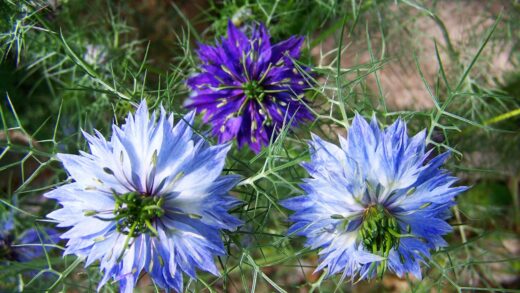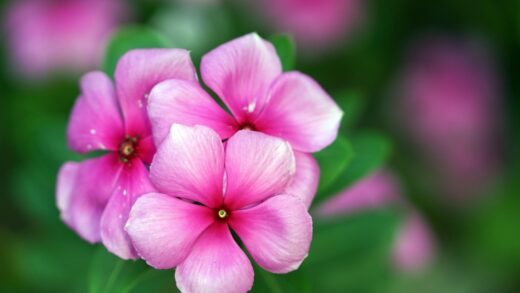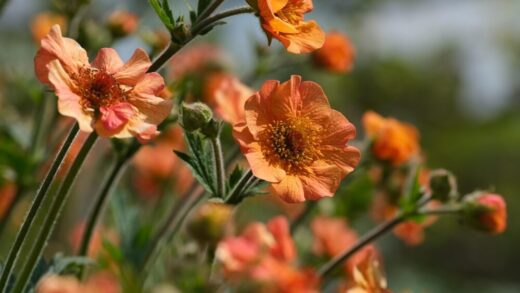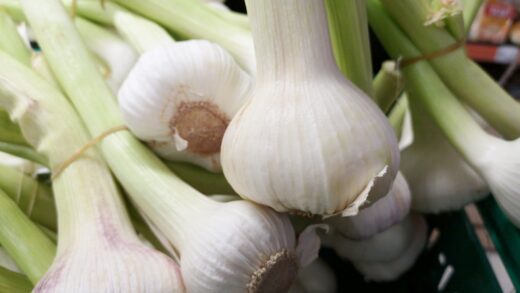The bellflower, known for its charming, bell-shaped blossoms, is a diverse genus with species ranging from low-growing alpines to tall, stately border plants. Proper care is essential to unlock their full potential, ensuring a profusion of blooms and healthy, vigorous growth throughout the season. Understanding the fundamental needs of these plants, from soil composition to light exposure, forms the bedrock of successful cultivation. While many varieties are quite resilient and adaptable, providing them with optimal conditions will result in a truly spectacular display in any garden setting. This initial chapter will delve into the foundational aspects of bellflower care, providing a comprehensive overview for both novice and experienced gardeners seeking to master the art of growing these delightful perennials.
The selection of an appropriate planting site is the first critical step in ensuring the long-term health of bellflowers. Most species thrive in well-drained soil, as waterlogged conditions can lead to root rot, a common and often fatal issue. It is advisable to amend heavy clay soils with organic matter such as compost or well-rotted manure to improve aeration and drainage. Conversely, overly sandy soils may drain too quickly, requiring the addition of organic material to enhance moisture retention. A soil pH that is neutral to slightly alkaline, typically between 6.0 and 8.0, is ideal for the majority of Campanula varieties, and conducting a soil test can provide valuable insights into any necessary amendments.
Sunlight exposure is another paramount consideration, with requirements varying significantly between different species. Many of the taller, border-type bellflowers, such as Campanula lactiflora and Campanula persicifolia, perform best in full sun to light partial shade. In regions with intense summer heat, some afternoon shade can be beneficial, preventing the foliage from scorching and the flowers from wilting prematurely. In contrast, the alpine and rock garden varieties often prefer the cooler conditions found in partial shade, mimicking their native mountainous habitats. Observing the specific location throughout the day is crucial to determine if it provides the right balance of light and shade for the chosen variety.
Consistent moisture is key, particularly during the plant’s establishment phase and throughout the peak growing and flowering season. While bellflowers do not appreciate constantly wet feet, they should not be allowed to dry out completely for extended periods. The soil should be kept evenly moist, and a layer of organic mulch, such as shredded bark or leaf mold, can be immensely helpful in conserving soil moisture and regulating temperature. This mulch layer also has the added benefit of suppressing weed growth, which can compete with the bellflowers for essential resources like water and nutrients. Checking the soil moisture regularly by inserting a finger an inch or two deep will provide the best indication of when it is time to water.
Soil and site selection
The foundation for a thriving bellflower display begins long before the first plant is even placed in the ground; it starts with the meticulous preparation of the soil. Bellflowers universally demand excellent drainage, a non-negotiable requirement for preventing the onset of root diseases. To achieve this, one must assess the native soil structure and act accordingly, incorporating materials like coarse sand, fine gravel, or perlite into dense, clay-heavy soils to create channels for water to escape. This process not only improves drainage but also enhances soil aeration, allowing the roots to breathe and establish a robust network. The ideal soil texture should be friable, meaning it crumbles easily, indicating a healthy balance of sand, silt, and clay.
More articles on this topic
Beyond drainage, the nutritional content and pH of the soil play a pivotal role in the plant’s overall health and flowering capacity. A soil rich in organic matter provides a slow, steady release of essential nutrients, closely mimicking the natural environment of many bellflower species. Incorporating well-rotted compost, leaf mold, or aged manure before planting enriches the soil, improves its structure, and fosters a healthy microbial ecosystem. It is also wise to perform a soil pH test, as most bellflowers show a clear preference for neutral to slightly alkaline conditions. If the soil is found to be acidic, an application of garden lime can be used to raise the pH to the optimal range, ensuring that nutrients are readily available for plant uptake.
Choosing the correct location within the garden is just as critical as the soil itself, with light exposure being a primary determinant of success. While the genus is diverse, a general rule is that larger, more robust species can tolerate and even thrive in full sun, provided they have consistent moisture. Varieties like the Canterbury bells (Campanula medium) or the great bellflower (Campanula latifolia) will produce the most prolific blooms when bathed in at least six hours of direct sunlight daily. However, in climates with particularly harsh afternoon sun, a location that offers some light shade during the hottest part of the day can prevent stress, leaf scorch, and premature flower fading.
Conversely, many of the smaller, mat-forming alpine species are best suited to different conditions that replicate their native habitats. These delicate varieties, such as Campanula carpatica or Campanula cochleariifolia, often flourish in partial shade or in locations that receive morning sun and afternoon protection. Planting them on the east-facing side of a structure or beneath the canopy of taller, deciduous trees can provide this ideal balance. Rock gardens, crevices in walls, or troughs are excellent settings for these smaller types, as these locations naturally offer the sharp drainage and cooler root run that they appreciate, protecting them from the dual threats of excessive heat and winter wetness.
General maintenance and upkeep
Regular maintenance throughout the growing season is crucial for keeping bellflowers looking their best and encouraging a long and productive flowering period. One of the most important routine tasks is deadheading, which is the practice of removing spent flowers. This not only improves the overall appearance of the plant by preventing it from looking untidy but also redirects the plant’s energy from seed production towards creating new blooms. For bellflowers that produce flowers on tall spikes, it is best to remove the individual spent blossoms as they fade, and once the entire spike has finished flowering, it can be cut back to the base of the plant to encourage a potential second flush of growth and flowers later in the season.
More articles on this topic
Weed control is another essential aspect of ongoing maintenance, as weeds compete directly with bellflowers for water, nutrients, and light, and can also harbor pests and diseases. Applying a two-to-three-inch layer of organic mulch around the base of the plants is an effective strategy for suppressing the germination and growth of annual weeds. This mulch also helps to conserve soil moisture and moderate soil temperature, creating a more stable environment for the plant’s roots. For any persistent weeds that do manage to break through, regular hand-pulling is the most effective and safest method, as it avoids the potential for damaging the bellflower’s shallow roots with cultivation tools.
As the season progresses, some of the taller bellflower varieties may require staking or other forms of support to prevent their flower-laden stems from bending or breaking, especially in windy locations or after heavy rain. Varieties such as Campanula lactiflora and Campanula pyramidalis can reach considerable heights and will almost certainly need support to maintain their stately, upright habit. It is best to put the supports in place early in the season, before the plants have achieved their full height, allowing them to grow up and through the supports for a more natural appearance. Grow-through grid supports or individual stakes with soft ties are both excellent options.
Finally, a general inspection of the plants on a regular basis is a key component of proactive care. This involves looking for any early signs of pest infestations, such as aphids on new growth, or the tell-tale slime trails of slugs and snails. It is also an opportunity to spot the initial symptoms of diseases like powdery mildew or rust, which can then be addressed promptly before they become widespread. Early detection and intervention are far more effective than trying to manage a severe problem later on. This regular monitoring allows for a swift response, ensuring the continued health and vitality of the bellflowers throughout the garden.
Division and rejuvenation
As bellflower clumps mature over several years, they can become overcrowded and less vigorous, often leading to a decline in flowering and a bare patch developing in the center of the plant. This is a natural part of their life cycle, and it signals that the time is right for division. Division is a simple yet effective method of plant propagation that also serves to rejuvenate the parent plant, stimulating fresh growth and ensuring its continued health and performance in the garden. For most bellflower species, this process is best undertaken in the early spring, just as new growth is emerging, or in the early autumn after the flowering period has concluded, giving the new divisions ample time to establish before winter.
The process of dividing a bellflower clump begins with carefully lifting the entire plant from the ground using a garden fork or spade. It is important to dig widely around the plant to minimize damage to the root ball. Once the clump is excavated, gently shake or wash off the excess soil to get a clear view of the root structure and the individual crowns. This will make it easier to see where the natural division points are. For smaller clumps, it may be possible to tease the sections apart by hand, while larger, more established clumps might require the use of two garden forks inserted back-to-back in the center of the clump to pry it apart, or a sharp, sterilized knife to make clean cuts.
When separating the clump, ensure that each new division has a healthy portion of both roots and shoots or crowns. The goal is to create viable new plants, so divisions that are too small or lack an adequate root system may struggle to establish. It is generally a good practice to discard the old, woody central part of the clump, as this section is the least vigorous, and instead replant the healthier, more youthful sections from the outer edges. This selective process ensures that the newly propagated plants will have the best possible start and grow with renewed energy.
After dividing the clump, the new sections should be replanted as soon as possible to prevent their delicate roots from drying out. They should be planted at the same depth they were previously growing, in a well-prepared bed enriched with compost or other organic matter. Water the newly planted divisions thoroughly to settle the soil around the roots and eliminate any air pockets. It is important to keep them consistently moist for the first few weeks as they establish their new root systems. This simple act of division not only provides new plants for other areas of the garden but also invigorates the original stock, leading to a more robust and floriferous display in the seasons to come.
Pest and disease management
While bellflowers are generally robust and healthy plants, they are not entirely immune to problems from pests and diseases. Proactive management and early detection are key to preventing minor issues from escalating into significant threats to the plants’ health. One of the most common pests to affect bellflowers, particularly the young, succulent new growth in spring, are slugs and snails. These mollusks can cause considerable damage overnight, chewing ragged holes in leaves and sometimes devouring entire seedlings. Employing strategies such as beer traps, diatomaceous earth barriers, or environmentally-friendly slug pellets can help to control their populations and protect the plants.
Aphids are another frequent pest, often found clustering on the tender tips of new shoots and flower buds, where they feed by sucking the plant’s sap. This can lead to distorted growth, weakened plants, and a reduction in flowering. In severe infestations, the aphids’ secretion of a sticky substance called honeydew can also promote the growth of sooty mold. Aphids can often be managed by spraying them off with a strong jet of water from a hose or by introducing beneficial insects like ladybugs and lacewings, which are natural predators. For more persistent problems, applications of insecticidal soap or neem oil can be effective.
In terms of diseases, powdery mildew is perhaps the most common ailment to affect bellflowers, especially in humid conditions or in gardens with poor air circulation. This fungal disease appears as a white, powdery coating on the leaves and stems, and if left unchecked, it can cause the foliage to yellow and die back. To prevent powdery mildew, it is crucial to provide adequate spacing between plants to promote good air movement. Watering at the base of the plant rather than overhead can also help to keep the foliage dry. If an infection does occur, fungicidal sprays specifically formulated for powdery mildew can be used to control its spread.
Another fungal disease that can occasionally trouble bellflowers is rust. This appears as small, orange or brown pustules on the undersides of the leaves. Similar to powdery mildew, rust thrives in damp conditions and can be mitigated by ensuring good air circulation and avoiding overhead watering. It is important to remove and destroy any infected leaves as soon as they are noticed to prevent the fungal spores from spreading to other parts of the plant or to neighboring plants. A clean garden environment, with the removal of fallen debris in the autumn, can also help to reduce the chances of rust and other diseases overwintering and re-emerging the following season.
Seasonal considerations
The care requirements for bellflowers evolve throughout the year, and understanding these seasonal nuances is essential for their long-term success. In the spring, as new growth emerges from the dormant crowns, the primary focus should be on providing the necessary resources for a strong start. This is the ideal time to apply a balanced, slow-release granular fertilizer around the base of the plants to fuel their initial growth spurt. It is also the time for proactive pest control, as tender new shoots are particularly vulnerable to slugs and snails. As the plants grow, ensure that any necessary supports for taller varieties are put in place early to guide their growth upwards.
Summer is the peak season for bellflowers, a time when they burst into a vibrant display of color. The main priority during these warmer months is to ensure consistent and adequate moisture, as the combination of heat and active growth can quickly deplete the water in the soil. Regular watering, especially during dry spells, is crucial to prevent wilting and to prolong the flowering period. This is also the time for diligent deadheading, as the regular removal of spent blooms will encourage the plant to produce more flowers and maintain a tidy appearance. Keep a watchful eye for any signs of heat stress, such as scorched leaves, and provide temporary shade if necessary for more sensitive varieties.
As summer transitions into autumn, the focus of care shifts from promoting blooms to preparing the plants for the coming winter. Taper off any fertilization by late summer to allow the plant’s growth to harden off naturally, which will improve its winter hardiness. Continue to water as needed, but reduce the frequency as temperatures cool and rainfall increases. After the first hard frost has blackened the foliage, the stems and leaves of most herbaceous perennial bellflowers can be cut back to just a few inches above the ground. This tidies up the garden bed and helps to prevent pests and diseases from overwintering in the dead plant material.
Winter care for bellflowers largely depends on the specific variety and the local climate. For most hardy perennial species, a layer of mulch, such as shredded leaves or straw, applied after the ground has frozen can provide valuable insulation for the root system. This is particularly important for young or newly planted bellflowers, as well as in regions with harsh winters and little reliable snow cover. The mulch helps to protect the crowns from the damaging effects of freeze-thaw cycles. For less hardy or container-grown varieties, more substantial winter protection or moving them to a sheltered location will be necessary to ensure their survival until the following spring.


















